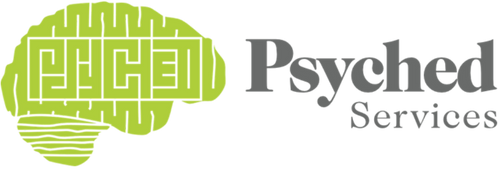5 Ways to Support Students with Executive Function Issues

We’ve been getting a lot of questions from teachers and Bay Area parents about how to help kids with executive functioning. Weaknesses in executive functioning are often found in both ADHD and specific learning disorders. Here’s our top 5 favorite strategies to help:
1. Visual checklists
Children with executive functioning deficits often have challenges in independently following through with steps to complete a process. Too often, parents and teachers become student’s executive function manager, constantly telling them what to do and when to do it. This can inadvertently make children too dependent on the adult. Visual checklists are great tools as they clearly outline expectations on what needs to be done and children learn to rely on it, rather than on directions from an adult. And eventually, with consistent practice and use, the visual checklist can be faded. And what’s best, they’re simple to make and with pictures, can even work for children who aren’t yet reading.
2. Timers
Executive functioning is not only about being able to think about a task and form a plan, but it’s also about being able to do so quickly. And we find this can often be the real kicker for a lot of the children we work with. Use of a timer by itself, often along with a visual checklist, can be an excellent method. Set a time expectation, slightly above where the child is currently at, and systematically increase the expectation over time with success. Parents can use this during homework routines and teachers in the classroom for independent work. There’s no shortage of great timer tools out there, from those that can sit on the desk to those found in the app store.
3. Positive reinforcement
A buzzword that is frequently tossed around, but in the field of Applied Behavior Analysis, positive reinforcement has a very specific definition and many complex considerations. Essentially though, it is why we do what we do and it is a powerful teaching tool that we use every day, even when we don’t know it. Examples of its use to improve executive functioning: praising your child for coming up with their own plan or solution to a problem, giving a student a thumbs up or a sticker for completing an assignment or explaining how they solved a problem or letting your child play their favorite game or spend time with a friend after they completed their chores that day.
4. Self-monitoring systems
We can’t get enough of the power of these, which ask children to monitor their own behavior. Self-monitoring can take many forms, such as asking a child to rate their behavior during a specific period of the day or the use of their strategies applied during a specific routine, such as homework. These systems encourage children to take an active role in their intervention. They also help teach what the specific expectations are, which is something we adults often incorrectly assume they know.
5. Teamwork
More often than not, a specific learning or behavior challenge is seen at home and school, even if it looks a little different. Consistency is key, especially with difficulties resulting from executive functioning weaknesses. These challenges can take many forms, such as problems with organization, memory, planning or speed. If you’re a teacher or parent and see a child is struggling with theses types of complications, work together to develop a plan of action, monitor its success with data and modify as needed. Working as a team will get children the best results.
At Psyched, we offer Pocket Coaching teleconferencing sessions for schools and parents. We’ve helped teachers and parents improve student’s executive function skills using many of the strategies described above. We create specific, actionable plans and provide ongoing encouragement and support to help parents and educators put them in place. We’re here to help, request a call to learn more.




